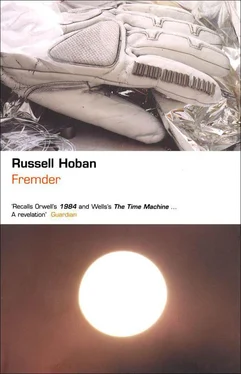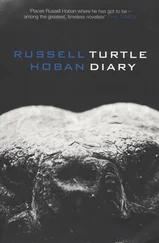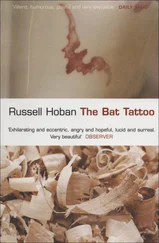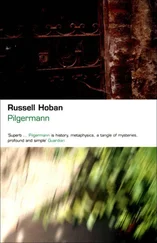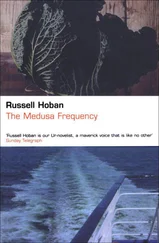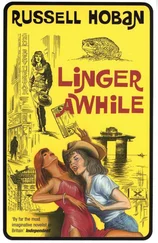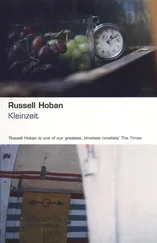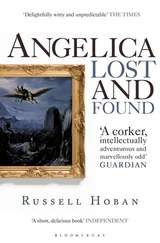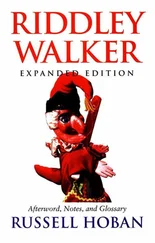Russell Hoban - Fremder
Здесь есть возможность читать онлайн «Russell Hoban - Fremder» весь текст электронной книги совершенно бесплатно (целиком полную версию без сокращений). В некоторых случаях можно слушать аудио, скачать через торрент в формате fb2 и присутствует краткое содержание. Год выпуска: 2003, Издательство: Bloomsbury, Жанр: Современная проза, Фантастика и фэнтези, на английском языке. Описание произведения, (предисловие) а так же отзывы посетителей доступны на портале библиотеки ЛибКат.
- Название:Fremder
- Автор:
- Издательство:Bloomsbury
- Жанр:
- Год:2003
- ISBN:нет данных
- Рейтинг книги:4 / 5. Голосов: 1
-
Избранное:Добавить в избранное
- Отзывы:
-
Ваша оценка:
- 80
- 1
- 2
- 3
- 4
- 5
Fremder: краткое содержание, описание и аннотация
Предлагаем к чтению аннотацию, описание, краткое содержание или предисловие (зависит от того, что написал сам автор книги «Fremder»). Если вы не нашли необходимую информацию о книге — напишите в комментариях, мы постараемся отыскать её.
Fremder — читать онлайн бесплатно полную книгу (весь текст) целиком
Ниже представлен текст книги, разбитый по страницам. Система сохранения места последней прочитанной страницы, позволяет с удобством читать онлайн бесплатно книгу «Fremder», без необходимости каждый раз заново искать на чём Вы остановились. Поставьте закладку, и сможете в любой момент перейти на страницу, на которой закончили чтение.
Интервал:
Закладка:
I : (YOUNG VOICE BUT OLDER THAN SITE 26) Oh yes, in the colours of the numbers, in the deep greens of the thousands and the purples of the tens. Where the millions and the mollions and the riffling of the wherewhen and the why-when, yes, my way is always and the purpling of the tens returning.
H : Tell me about your way.
I : Always in the wherewhen of returning and the purpling of the tens, yes.
H : How many tens?
I : As the riffling, where it happens.
H : Where what happens, Izzy?
I : (NO ANSWER)
H : Amygdala, site 28, left posterior:.5 sec, 100 Hz.
I : (WHIMPERING, FOLLOWED BY VERY GUTTURAL SPEECH IN A LOW AND UNFAMILIAR VOICE) NO. Not this. Please don’t, I don’t want this.
H : Don’t want what?
I : The music is letting it in, the music is opening the door.
H : Opening the door to what?
I : It’s too much. No more much, please, no more.
H : Should I close the door?
I : (BRACING HIS ARMS TO LIFT HIMSELF HALF OUT OF WHEELCHAIR) Nnnyhh. I can smell it.
H : Smell what?
I : The purple-blue, very strong, very luminous and intense.
H : What does it smell like?
I : Like itself, like the purple-blueness of itself. Like a great beast, ancient and forgotten. Yes, this. Let it come to me.
H : Just a moment ago you said you didn’t want it.
I : I was wrong, I want it. Get out of the way.
H : What is this ‘it’? Who’s in the way?
I : Only the brain stands between us and it.
That’s where Session Transcript 318 comes to an end and that’s as far as the transcripts go. In just a little less than two months Izzy was gone. I was reasonably sure that the ‘it’ that Izzy referred to was what I’d been trying to get in touch with ever since the day I broke Albert Stiggs’s nose but I still hadn’t learned how to get my brain out of the way.
Here’s the rest of ‘A Note on Flicker Drive’. It’s all right as far as it goes but it doesn’t tell you what it’s like to flicker: you hit the switch that disappears you and if everything goes all right you reappear somewhere else. In between you’re being transmitted as M-waves, called Ems by those of us in the trade. An apt word, that: back in the days of movable type an em was a thin bit of brass stuck between letters or words to space them out. The deep-space Em derives from Maximum Probability, which sounded a little dicey and was therefore shortened to M to make it less worrying. And there are one or two things to worry about if you’re the worrying type: suppose they send you out on a frequency that’s already occupied — think what can happen. And it has happened although Corporation won’t admit it. Never mind. Back to the Corporation Yearbook ; the sooner we get through this the sooner we can move on to other things:
Helen Gorn then calculated the scaling fractal of the electrical output of the amygdala and plotted the Schulz-Moreno curve that gave her the voltage necessary to boost the carrier-wave frequency and extend the alternating intervals of non-being to the maximum at which the zoetic current could be maintained, so creating the reserve that would make flicker drive possible. Exploiting the self-similarity of the being/non-being wave pattern, she scaled it down several thousandfold but kept its profile so that at the chrono-zoetic interface the condensed carrier-wave profile would be accepted as normal and months of time would pass as moments.
Following on from her parents’ pioneering work in molecular translation, Helen Gorn hypothesised that a non-being zoetic reserve could be sustained in the conversion of mass into energy: particles of matter into quantum-probability waves. It was at this point that she saw the possibility of what is now known as flicker drive. Gorn presented a proposal to the Sheela-Na-Gig in February 2021 and they voted unanimously to fund her project.
Using a radio-controlled oscillator implanted in her brother Isodor’s amygdala she was able to step up the frequencies of its output to achieve the reserve of non-being that she had theorised, but there still remained the problem of molecular translation and transmission.
Tragically, Helen Gorn died while the project was still in its early stages; Corporation colleague Irene Heale, however, took up the work, and through original thinking of rare brilliance, brought it to fruition. By 2024 she had developed the diapason scanner for boosting the frequencies of the molecules of every substance in and of the spacecraft synchronously with those of the human organism, and in 2030 built the first external variable mass/energy translator (EVMET) for the conversion and transmission of humans and their cargoes as M-waves to galaxies far beyond our own.
On 2 May 2032, after a number of successful transmissions with EVMETS, Heale presented the prototype onboard flicker drive at the Annual Corporation Conference, sending the spacecraft Prospero from Nova Central to the Circle of Copernicus and back with a chimpanzee aboard. Ship and crew flickered out of being at Nova Central and were seen on the monitor screens to flicker into being at the target point, having been transmitted and received almost instantaneously at points millions of megakilometres apart. Intergalactic travel, until then impossible within human lifespan, was an accomplished fact.
In 2033 Irene Heale was honoured with the Max Planck Prize for Megaphysics. Since then she has remained preeminent in her field and continues to initiate and carry out projects characteristically daring in conception and elegant in execution.
With the help of a hacker acquaintance I did some research on the Prospero mission. The chimp they sent to the Circle of Copernicus was called, you guessed it, Caliban. This Caliban was famous for his intelligence and had been taught to communicate with humans by means of coloured push-buttons with symbols. For eat, consume, take in, absorb , or banana , for example, there was a button with a yellow banana and so on. His only message after he was reconstituted at the Circle of Copernicus was: ‘I have taken in much too much nothing.’ Or, if you like: ‘I banana many, many not something.’ When questioned on his return to Nova Central he pushed the button with a two-finger symbol, strangled his keeper, and was put down.
Back to ‘A Note on Flicker Drive’:
Now in 2053 Corporation ships flicker out from Nova Central, from Daedopolis, and from Hubble Straits to the planets of seven galaxies; in them go our deep-spacers whose daring is a bright flame in the darkness all around us, on their shoulders the Deep Space Command emblem with our motto: ‘ SEMPER LONGIUS ’, ‘ALWAYS FARTHER’.
*
Puts a lump in your throat, doesn’t it. Those of us who made a living being sent here and there as maximum-probability (but not dead-certainty) waves sometimes wondered what sort of effect flicker drive might have on us. Potency and fertility were major concerns but those fears proved groundless. Cynics like me, pondering the high pay and the easy life, wondered sometimes if there might not be some kind of a catch to the whole thing and I was not terribly surprised one evening towards the end of October 2052 when, as I sat in The Black Hole in London Central refreshing my solitude with Glenfiddich, a colleague stuck a copy of Nature under my nose and pointed to a little item headed Tempus Fugit :
Drs Melissa Chundera and Ernestine Morrison of the Daedalus Institute have published the results of a five-year study of deep-space personnel travelling on flicker drive. Their controversial report establishes a definite connection between flicker travel and accelerated cellular and neuronal decay; they estimate that a half-second Earth-Elapsed-Time flicker jump to the Second Galaxy might consume as much as two months of life expectancy. A second study now under way is expected to show a comparable effect on metals and other substances.
Читать дальшеИнтервал:
Закладка:
Похожие книги на «Fremder»
Представляем Вашему вниманию похожие книги на «Fremder» списком для выбора. Мы отобрали схожую по названию и смыслу литературу в надежде предоставить читателям больше вариантов отыскать новые, интересные, ещё непрочитанные произведения.
Обсуждение, отзывы о книге «Fremder» и просто собственные мнения читателей. Оставьте ваши комментарии, напишите, что Вы думаете о произведении, его смысле или главных героях. Укажите что конкретно понравилось, а что нет, и почему Вы так считаете.
